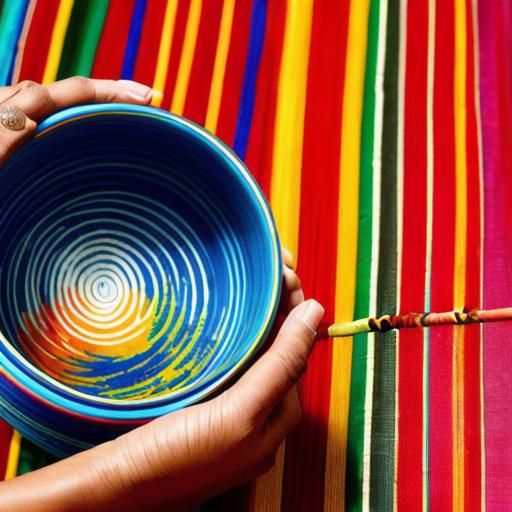Kalamkari, an ancient Indian art form, has long captivated audiences with its mesmerizing textiles adorned with intricate designs and vibrant colors. This artisanal technique, which involves painting on fabric using a pen-like instrument called a kalam, along with a reduction dyeing process, offers a unique opportunity to bring your creativity to life. In this concise guide, we will explore the essentials of creating your own masterpiece at home.
-
Defining Kalamkari:
Kalamkari is an age-old art form hailing from the Indian states of Andhra Pradesh and Tamil Nadu. This artistic method encompasses painting on fabric using a kalam, a flexible bamboo pen with a fine tip, and a reduction dyeing process.The result?
Stunning textiles adorned with intricate designs that exude an ethereal charm.
-
Gathering Essentials:
To embark on your Kalamkari journey, obtain the following essentials: natural fabrics such as cotton or silk; a kalam (made from bamboo); plant- or mineral-based dyes; and a sturdy work surface. These materials will form the foundation of your artistic endeavor, allowing you to create designs that come alive with each stroke. -
Preparing Your Materials:
Before painting, mordant the fabric by applying a substance that helps dyes adhere. This process, called mordanting, ensures long-lasting colors and an antique charm. To mordant your fabric, mix alum or iron mordant in water and immerse the fabric for several hours or overnight. Rinse thoroughly before use. -
Creating Designs:
Draw inspiration from nature and mythology for intricate designs; experiment freely to express yourself uniquely. Begin by sketching your design on paper, then transfer it onto the fabric using charcoal powder or a light pencil line. Once you have your design ready, it’s time to bring it to life. -
Mastering the Technique:
Hold the kalam like a pen, dip in dye, and apply delicately onto the fabric with various strokes and pressure points for different line thicknesses and effects. Keep practicing until you master the art of using the kalam to create fine lines, bold strokes, and delicate shading.

- Embracing Patience:
Creating a Kalamkari artwork requires time and dedication – each stroke takes patience to set in place. But as you watch your design come alive before your eyes, the satisfaction of having brought art to life makes it all worthwhile.















